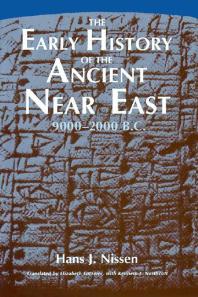
 The Reshaping of Ancient Israelite History in Chronicles
by
Isaac Kalimi
Kalimi catalogues and categorizes the techniques by which the Israelite history in Samuel-Kings is reshaped in the biblical books of Chronicles. The chapters of this study consider the various historiographical and literary changes found in the parallel texts of Chronicles. Because about half of the material in Chronicles is available to us in other biblical sources, comparison of the literary and linguistic devices used by the Chronicler are very revealing. Kalimi considers the ways in which the Chronicler has edited the material available to him, addressing such topics as: literary-chronological proximity, historiographical revision, completions and additions, various kinds of parallelism and literary devices, and so on. A handy compendium of the ways in which the Chronicler treated his material by one of the premier scholars working in the field.
The Reshaping of Ancient Israelite History in Chronicles
by
Isaac Kalimi
Kalimi catalogues and categorizes the techniques by which the Israelite history in Samuel-Kings is reshaped in the biblical books of Chronicles. The chapters of this study consider the various historiographical and literary changes found in the parallel texts of Chronicles. Because about half of the material in Chronicles is available to us in other biblical sources, comparison of the literary and linguistic devices used by the Chronicler are very revealing. Kalimi considers the ways in which the Chronicler has edited the material available to him, addressing such topics as: literary-chronological proximity, historiographical revision, completions and additions, various kinds of parallelism and literary devices, and so on. A handy compendium of the ways in which the Chronicler treated his material by one of the premier scholars working in the field.
 The Early History of the Ancient near East, 9000-2000 B. C.
by
Hans J. Nissen; Elizabeth Lutzeier (Translator); Kenneth J. Northcott (Translator)
Hans J. Nissen here provides a much-needed overview of 7000 years of development in the ancient Near East from the beginning of settled life to the formation of the first regional states. His approach to the study of Mesopotamian civilization differs markedly from conventional orientations, which impose a sharp division between prehistoric and historic, literate, periods. Nissen argues that this approach is too rigid to explain the actual development of that civilization. He deemphasizes the invention of writing as a turning point, viewing it as simply one more phase in the evolution of social complexity and as the result of specific social, economic, and political factors. With a unique combination of material culture analysis written data, Nissan traces the emergence of the earliest isolated settlements, the growth of a network of towns, the emergence of city states, and finally the appearance of territorial states. From his synthesis of the prehistoric and literate periods comes a unified picture of the development of Mesopotamian economy, society, and culture. Lavishly illustrated, The Early History of the Ancient Near East, 9000-2000 B.C. is an authoritative work by one of the most insightful observers of the evolution and character of Mesopotamian civilization.
The Early History of the Ancient near East, 9000-2000 B. C.
by
Hans J. Nissen; Elizabeth Lutzeier (Translator); Kenneth J. Northcott (Translator)
Hans J. Nissen here provides a much-needed overview of 7000 years of development in the ancient Near East from the beginning of settled life to the formation of the first regional states. His approach to the study of Mesopotamian civilization differs markedly from conventional orientations, which impose a sharp division between prehistoric and historic, literate, periods. Nissen argues that this approach is too rigid to explain the actual development of that civilization. He deemphasizes the invention of writing as a turning point, viewing it as simply one more phase in the evolution of social complexity and as the result of specific social, economic, and political factors. With a unique combination of material culture analysis written data, Nissan traces the emergence of the earliest isolated settlements, the growth of a network of towns, the emergence of city states, and finally the appearance of territorial states. From his synthesis of the prehistoric and literate periods comes a unified picture of the development of Mesopotamian economy, society, and culture. Lavishly illustrated, The Early History of the Ancient Near East, 9000-2000 B.C. is an authoritative work by one of the most insightful observers of the evolution and character of Mesopotamian civilization.

